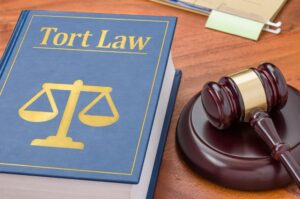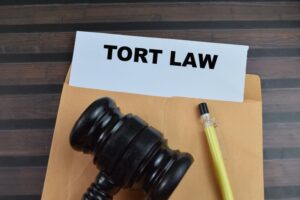Mass tort lawsuits are legal actions that involve multiple victims (the plaintiffs) who have suffered similar harm from the actions of one or more at-fault individuals or entities (the defendants). Mass tort lawsuits play a significant role in supporting consumer protection by holding corporations and other entities accountable for their actions and ensuring that consumers receive compensation for harm resulting from defective products, unsafe practices, or other misconduct.
A knowledgeable mass tort lawyer in your area can determine your eligibility for filing a claim or lawsuit and handle all the legal steps for you. Your attorney can also aggressively represent you during settlement negotiations with insurance company representatives or litigate your case through the court system in a timely manner.
Schedule a Free Initial Consultation Today!
Common Categories of Mass Tort Lawsuits
 Mass tort cases often arise when a product, such as a medication or a consumer good, causes widespread harm – or when a company’s actions lead to injuries or damages affecting many people. There are several common categories of mass tort lawsuits:
Mass tort cases often arise when a product, such as a medication or a consumer good, causes widespread harm – or when a company’s actions lead to injuries or damages affecting many people. There are several common categories of mass tort lawsuits:
- Pharmaceutical Drugs and Medical Devices – One prevalent type of mass tort involves pharmaceutical drugs or medical devices with harmful side effects or defects. These lawsuits may arise from allegations of inadequate testing and failure to warn about potential risks or defects in the design or manufacturing process. Examples include cases involving prescription medications like Vioxx or medical devices like pelvic mesh implants.
- Environmental Contamination – Mass tort lawsuits can also stem from environmental contamination, in which individuals or communities suffer harm from exposure to toxic substances. These cases often involve allegations of pollution from industrial activities, such as chemical spills or improper waste disposal, leading to health problems or property damage for nearby residents.
- Consumer Products – Defective consumer products can lead to mass tort litigation when they cause widespread injuries or property damage. Examples include defective automobile parts – such as airbags or brakes – or household products like appliances or children’s toys with design flaws or manufacturing defects.
- Toxic Tort – Similar to environmental contamination cases, toxic tort lawsuits involve harm from exposure to hazardous substances. These substances can include chemicals, pesticides, asbestos, or other toxic materials. These cases may arise from workplace exposure, contaminated drinking water, or exposure in residential areas.
- Personal Injury – Mass torts can also encompass a wide range of personal injury claims, including accidents involving transportation (such as aviation or train crashes), workplace accidents, or incidents involving negligent or intentional harm by individuals or entities. These cases may involve many plaintiffs seeking compensation for injuries due to someone else’s negligence or misconduct.
In mass tort lawsuits, plaintiffs often join together to pursue their claims more efficiently and cost-effectively than they might individually. These cases typically involve complex legal issues and extensive discovery processes, often resulting in settlements or verdicts that compensate the affected individuals. Mass tort litigation is crucial in holding corporations and other entities accountable for their actions and providing justice and restitution to those who suffered harm from their misconduct or negligence.
How Do Mass Tort Lawsuits Support Consumer Protection?
Mass tort lawsuits support consumer protection in a variety of ways, including all of the following:
- Increased Accountability – Mass tort lawsuits create accountability for corporations and manufacturers by highlighting instances where their products or actions have caused harm to consumers. When faced with the prospect of mass litigation, companies are incentivized to improve product safety, enhance quality control measures, and provide adequate warnings about potential risks to consumers.
- Public Awareness – Mass tort lawsuits often attract media attention and raise public awareness about dangerous products or practices. This increased awareness can prompt regulatory agencies to take action, such as issuing recalls or implementing stricter safety standards, to protect consumers from future harm.
- Compensation for Victims – Mass tort lawsuits provide a mechanism for victims to seek compensation for injuries, medical expenses, lost income, and other damages resulting from the defendant’s actions. By pursuing legal action collectively, plaintiffs can pool resources and increase their chances of obtaining fair compensation – even when facing powerful corporate defendants.
- Incentive for Compliance – The threat of mass tort litigation serves as a deterrent for companies that may otherwise prioritize profits over consumer safety. Knowing that they may face costly lawsuits and damage to their reputation, businesses are motivated to comply with regulations, conduct thorough testing, and take proactive measures to prevent harm to consumers.
- Legal Precedent – Mass tort lawsuits can establish a legal precedent that shapes future consumer protection laws and regulations. Landmark cases often result in changes to industry practices, product labeling requirements, or liability standards, providing long-term benefits for consumer safety and protection.
- Access to Justice – Mass tort lawsuits level the playing field for consumers who have suffered harm at the hands of powerful corporations or entities. Through class actions or multidistrict litigation, individuals with similar claims can join forces and seek justice without the burden of navigating complex legal processes alone.
Overall, mass tort lawsuits are crucial tools for safeguarding consumer rights, promoting product safety, and holding negligent parties accountable for their actions.
Proving the Legal Elements of a Mass Tort Claim or Lawsuit
 Proving the elements of a mass tort claim or lawsuit involves demonstrating that the defendant’s actions or products caused harm to the plaintiffs and that the harm resulted from specific legal violations or negligence. Here’s how the elements of a mass tort claim are typically established:
Proving the elements of a mass tort claim or lawsuit involves demonstrating that the defendant’s actions or products caused harm to the plaintiffs and that the harm resulted from specific legal violations or negligence. Here’s how the elements of a mass tort claim are typically established:
- Duty of Care – The first element to prove is that the defendant owed the plaintiffs a legal duty of care. This means showing that the defendant had a legal obligation to act reasonably and avoid causing harm to others. In mass tort cases, the duty of care often involves ensuring that products are safe for their intended use or that reasonable precautions are taken to prevent foreseeable harm.
- Breach of Duty – The next step is to establish that the defendant breached their duty of care by engaging in negligent conduct or manufacturing and distributing defective products. This may involve presenting evidence of design flaws, manufacturing defects, inadequate warnings, or failure to comply with industry standards or regulations.
- Causation – Causation is a critical element of any tort claim, including mass torts. Plaintiffs must demonstrate that the defendant’s breach of duty was the direct cause of their injuries or damages. This requires proving that the defendant’s actions or products were a substantial factor in causing the plaintiffs’ harm.
- Harm or Damages – Plaintiffs must also prove that they suffered actual harm or damages as a direct result of the defendant’s conduct. This may include physical injuries, emotional distress, financial losses, or other measurable harm. Documenting medical records, financial statements, and expert testimony can help to establish the full extent of the plaintiffs’ damages.
- Legal Theories – Depending on the case’s specific circumstances, plaintiffs may rely on various legal theories to support their claims, such as strict liability, negligence, or breach of warranty. Each theory requires different elements to be proven, and plaintiffs must tailor their arguments and evidence accordingly.
- Class Certification – In mass tort cases involving multiple plaintiffs, obtaining class certification is often necessary to proceed with the lawsuit as a group. Class certification requires demonstrating that the plaintiffs share common legal and factual issues and that a class action is the most efficient and appropriate way to resolve the dispute.
Successfully proving the elements of a mass tort claim requires thorough investigation, expert analysis, and persuasive advocacy. An experienced mass tort lawyer can gather appropriate evidence, present compelling legal arguments, and pursue the best possible outcome in your case.
Settling or Litigating a Mass Tort Case
Deciding whether to settle or litigate a mass tort case involves weighing the potential benefits and risks of each option, taking into account factors such as the strength of the evidence, the likelihood of success in court, and the needs and preferences of the plaintiffs. Here’s a breakdown of settling versus litigating a mass tort case:
- Settling the Case – Settling a mass tort case involves reaching an agreement with the defendant or defendants outside of court, typically through negotiations by attorneys representing both sides. Settlement offers the advantage of resolving the case more quickly and with less uncertainty than going to trial. It can also provide plaintiffs with a guaranteed source of compensation without the need to endure the stress and expense of prolonged litigation.
However, settling a case may result in lower financial recovery for plaintiffs than a successful trial verdict. Additionally, plaintiffs may have to agree to confidentiality provisions or other terms in the settlement agreement. Before accepting a settlement offer, plaintiffs should carefully consider whether the proposed terms adequately compensate them for their injuries and losses.
- Litigating the Case – Litigating a mass tort case involves presenting evidence and arguments in court before a judge or jury, with the goal of obtaining a favorable verdict or judgment. Litigation allows plaintiffs to pursue maximum compensation for their injuries and damages and can provide an opportunity for accountability and justice against negligent defendants.
However, litigation can be time-consuming, expensive, and unpredictable. Mass tort cases often involve complex legal issues, extensive discovery processes, and the need for expert testimony, which can significantly lengthen the duration and cost of the litigation. Moreover, there is no guarantee of success at trial, and plaintiffs may ultimately receive less compensation than anticipated – or even face the risk of losing the case entirely.
Ultimately, deciding to settle or litigate a mass tort case depends on various factors, including the strength of the evidence, the potential outcomes, and the plaintiffs’ preferences. Attorneys representing the plaintiffs play a crucial role in advising clients on the best course of action and advocating for their interests throughout the legal process.
Recovering Monetary Damages in a Mass Tort Case
 In a mass tort lawsuit, individuals may recover compensation for the harm and losses they have suffered due to the defendant’s actions or products. This compensation should help victims recover financially and provide restitution for the physical, emotional, and financial toll of their injuries. Here are some common types of compensation available in mass tort lawsuits:
In a mass tort lawsuit, individuals may recover compensation for the harm and losses they have suffered due to the defendant’s actions or products. This compensation should help victims recover financially and provide restitution for the physical, emotional, and financial toll of their injuries. Here are some common types of compensation available in mass tort lawsuits:
- Medical Expenses – Victims of mass torts may be entitled to recover compensation for past, present, and future medical expenses related to their injuries. This can include costs for hospitalization, surgery, medication, rehabilitation, therapy, and other necessary medical treatments.
- Lost Income – Individuals who suffered injuries in a mass tort may be out of work or may experience a loss of income due to their injuries. Compensation for lost income can help to offset the financial hardship of not working – or reduced earning capacity due to disability or impairment.
- Pain and Suffering – Compensation for pain and suffering is intended to compensate victims for the physical pain, discomfort, and emotional distress they have endured as a result of their injuries. This type of compensation is often subjective and may vary depending on the severity and duration of the pain and suffering that the victim experienced.
- Loss of Consortium – In cases where the injuries suffered in a mass tort lawsuit have affected the victim’s relationships with their spouse or family members, compensation may be available for loss of consortium. This can include damages for loss of companionship, affection, intimacy, and support.
In some cases, plaintiffs may receive punitive damages in addition to compensatory damages. Punitive damages punish the defendant for their wrongful conduct and deter similar misconduct in the future. Punitive damages are typically available in cases where the defendant’s actions were particularly egregious or reckless.
Also, in cases where a victim dies as a result of their injuries, surviving family members may be entitled to compensation for wrongful death. This can include compensation for funeral expenses, lost financial support, and the emotional pain and suffering resulting from the loss of a loved one.
These are just some of the types of compensation that individuals may recover in a mass tort lawsuit. The specific types and amounts of compensation awarded will vary depending upon the case circumstances, the severity of the injuries, and other related factors. An experienced mass tort attorney can help victims understand their rights and pursue the full compensation they deserve for their losses.
Speak with an Experienced Mass Tort Lawyer about Your Legal Matter Today
 A knowledgeable mass tort lawyer can determine your eligibility for filing a claim or lawsuit. They can then aggressively negotiate on your behalf or litigate your case to an efficient resolution in the court system. Throughout the process, they will fight for your interests and work to maximize the compensation award you receive for your injuries.
A knowledgeable mass tort lawyer can determine your eligibility for filing a claim or lawsuit. They can then aggressively negotiate on your behalf or litigate your case to an efficient resolution in the court system. Throughout the process, they will fight for your interests and work to maximize the compensation award you receive for your injuries.

